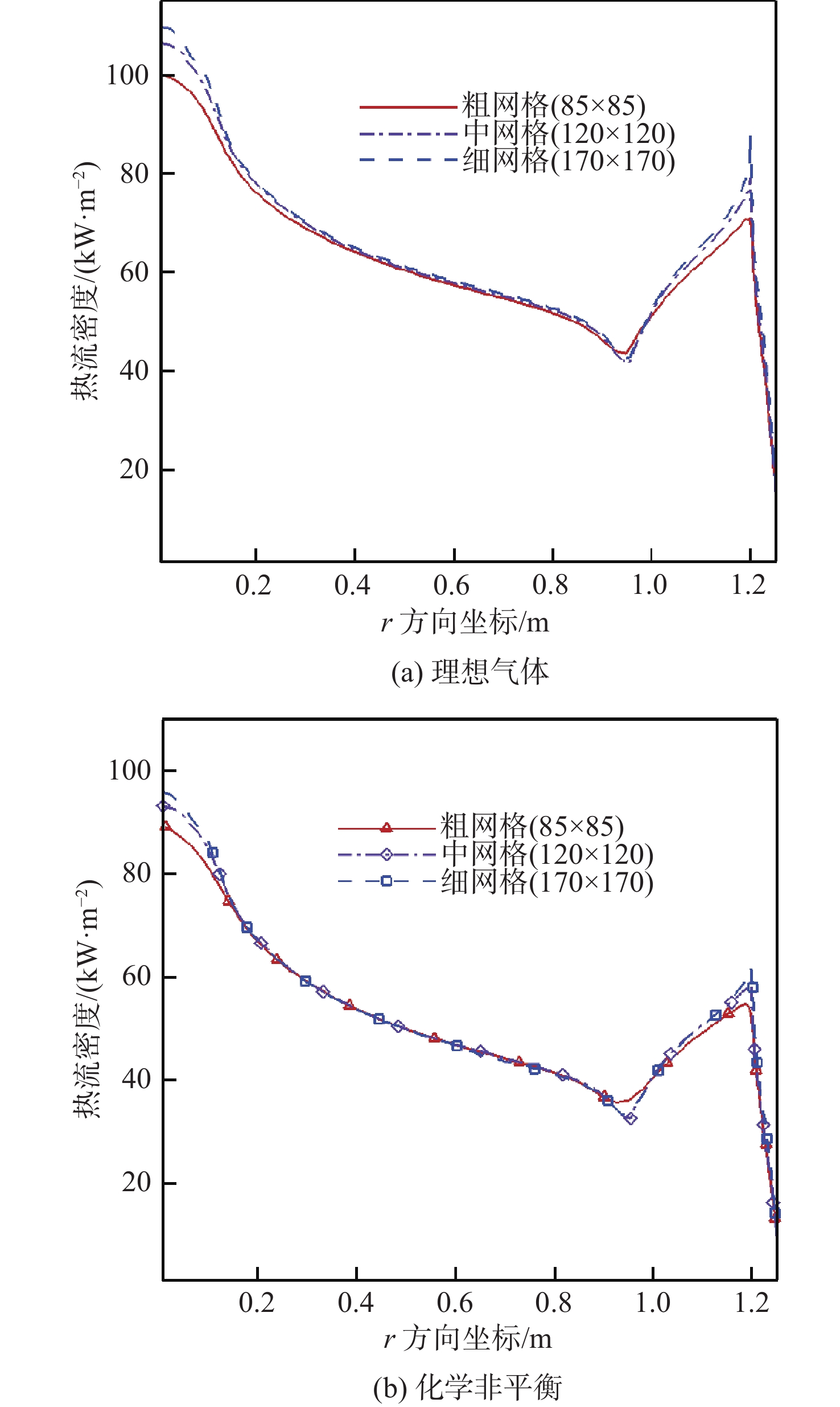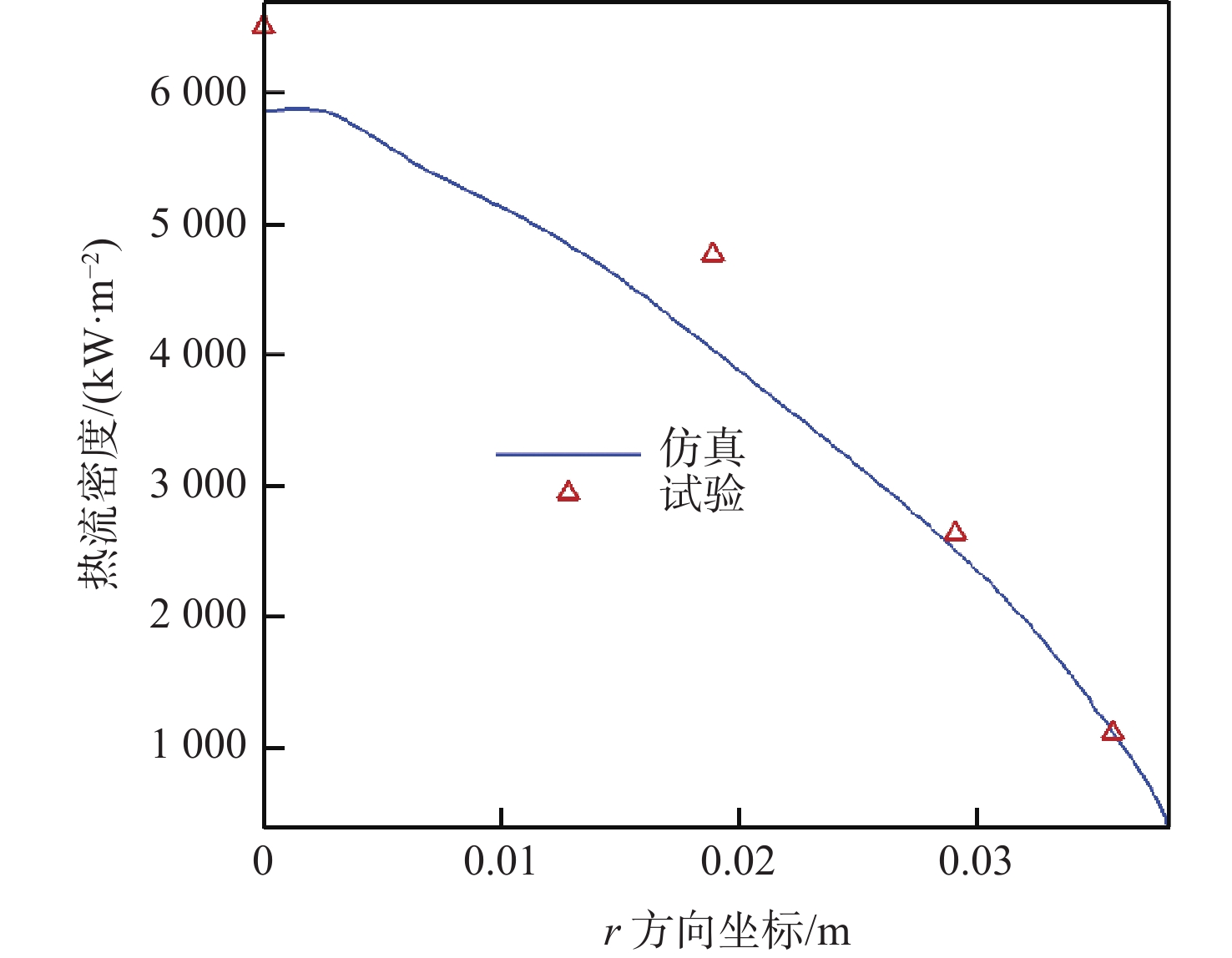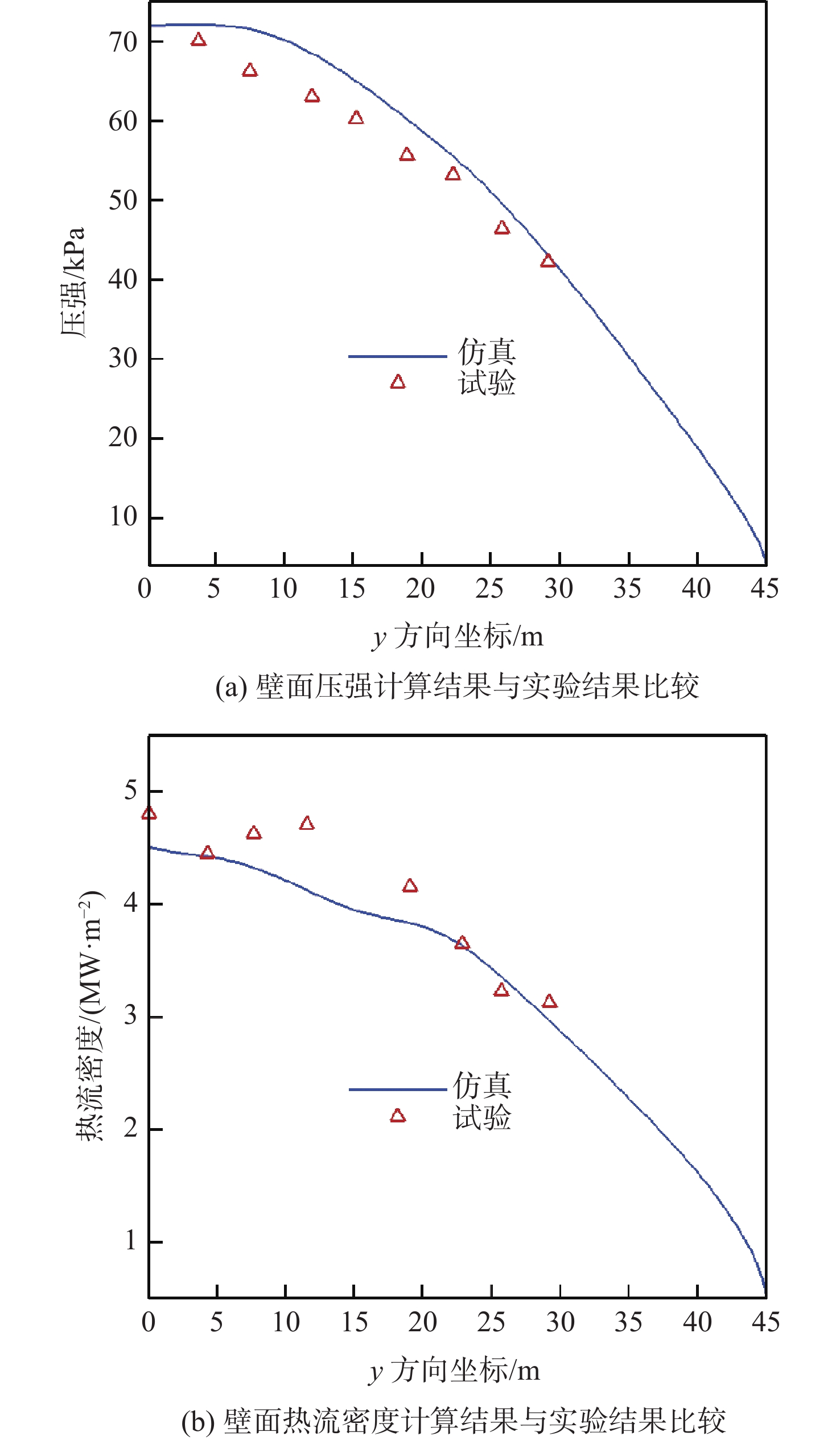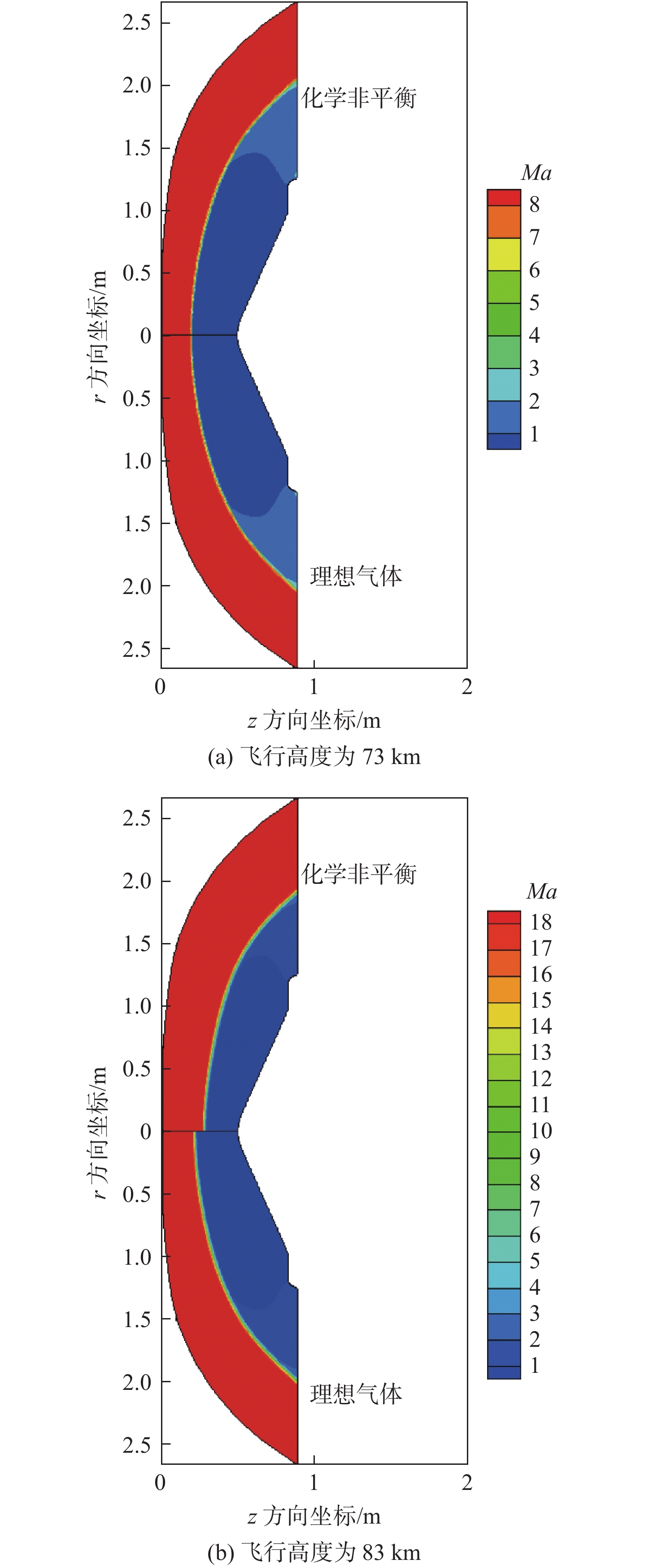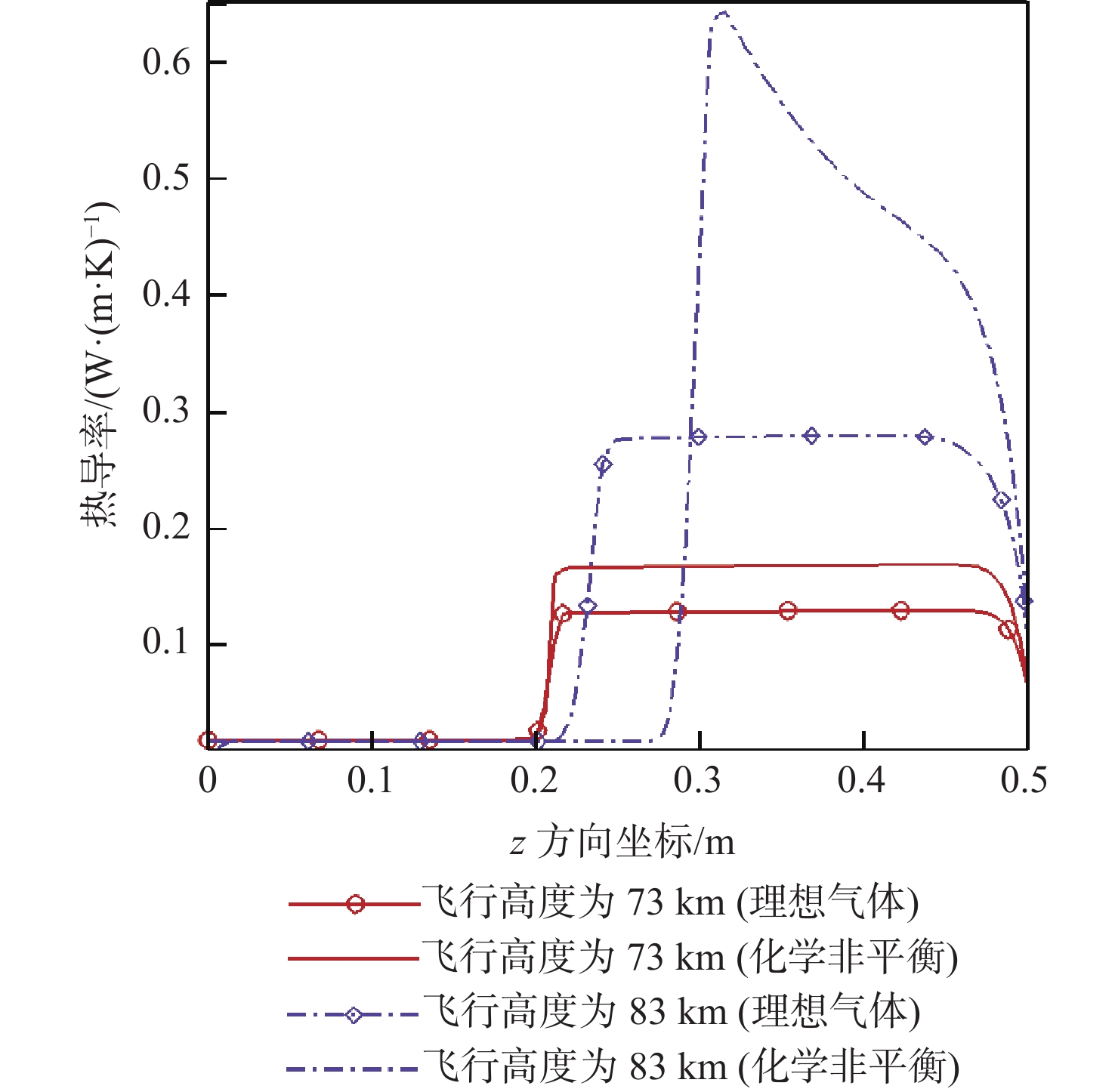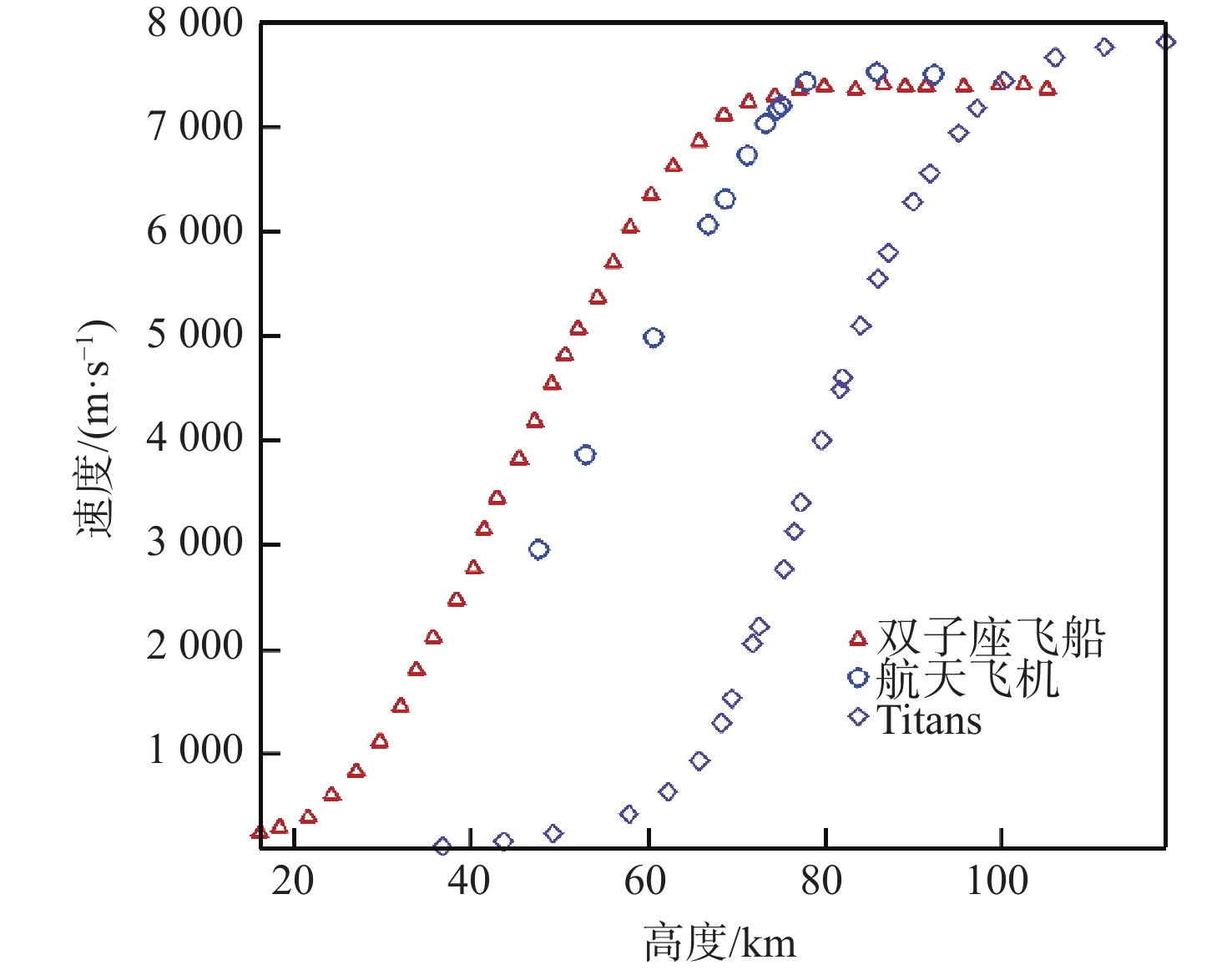-
摘要:
分别采用空气9组分化学非平衡模型和基于理想气体假设模型对充气式返回舱再入流场进行数值模拟,考察2种方法计算结果的差异,研究真实气体效应的表现形式,探究充气式返回舱真实气体效应与刚性返回舱真实气体效应存在差异的原因。研究结果表明:相比于理想气体假设,真实气体效应使激波位置更靠近壁面,激波后空气温度降低,壁面热流密度下降;在飞行高度为83 km处,激波后气体比热比高于1.4,空气发生解离反应,而在飞行高度为73 km处真实气体效应的作用较弱,激波后空气的比热比维持在1.4,空气仍以分子的形式存在;导致充气式返回舱与刚性返回舱在相同高度范围真实气体强弱差异的主要原因是充气式返回舱的阻重比相较于刚性返回舱更大,进入大气后速度下降更快,在相同高度速度更低。
Abstract:In this paper, a 9-component chemical non-equilibrium model and a perfect gas model were used to study the reentry flow of an inflatable reentry decelerator through numerical simulation. The differences in the calculation results of the two models were investigated. The manifestation of the real gas effect was studied, and the reason for the difference between the real gas effect of inflatable reentry decelerator and that of rigid capsule was explored. The results show that compared to the perfect gas hypothesis, the shock wave position is closer to the wall in the real gas effect. After the shock wave, the air temperature decreases, and the wall heat flux decreases. At 83 km, the specific heat ratio of the gas after the shock wave is higher than 1.4, and the air undergoes a dissociation reaction. At 73 km, the real gas effect is very weak, and the specific heat ratio of the gas after the shock wave remains at 1.4. The air still exists in the form of molecules. The main reason for the difference in real gas strength between inflatable reentry decelerator and rigid capsule in the same altitude range is that the inflatable reentry decelerator has a larger resistance-weight ratio than the rigid capsule. Its speed drops faster after entering the atmosphere, and its speed is lower at the same altitude.
-
表 1 计算工况的来流参数
Table 1. Inflow parameters of operating conditions
飞行高度/km 速度/(m·s−1) 密度/(kg·m−3) 温度/K 73 2396 5.125×10−5 211.5 83 5081 1.105×10−5 191.2 -
[1] FURUYA H, MURATA S, NAKAHARA M, et al. Concept of inflatable tensegrity for large space structures[C]// Proceedings of the 47th AIAA/ASME/ASCE/AHS/ASC Structures, Structural Dynamics, and Materials Conference. Reston: AIAA, 2006. [2] 卫剑征, 谭惠丰, 王伟志, 等. 充气式再入减速器研究最新进展[J]. 宇航学报, 2013, 34(7): 881-890.WEI J Z, TAN H F, WANG W Z, et al. New trends in inflatable re-entry aeroshell[J]. Journal of Astronautics, 2013, 34(7): 881-890(in Chinese). [3] HILLJE E R, SAVAGE R. Status of the aerodynamic characteristics of the Apollo entry configuration[C]// Proceedings of the Entry Vehicle Systems and Technology Meeting. Reston: AIAA, 1968. [4] WATANABE S, ISHIMOTO S, YAMAMOTO Y. Aerodynamic characteristics evaluation of hypersonic flight experiment vehicle based on flight data[J]. Journal of Spacecraft and Rockets, 1997, 34(4): 464-470. doi: 10.2514/2.3259 [5] HOLDEN M, WADHAMS T, MACLEAN M, et al. Experimental studies in LENS I and X to evaluate real gas effects on hypervelocity vehicle performance[C]//Proceedings of the 45th AIAA Aerospace Sciences Meeting and Exhibit. Reston: AIAA, 2007. [6] GUO J H, LIN G P, BU X Q, et al. Effect of static shape deformation on aerodynamics and aerothermodynamics of hypersonic inflatable aerodynamic decelerator[J]. Acta Astronautica, 2017, 136: 421-433. doi: 10.1016/j.actaastro.2017.03.019 [7] TAKAHASHI Y, KOIKE T, OSHIMA N, et al. Aerothermodynamic analysis for deformed membrane of inflatable aeroshell in orbital reentry mission[J]. Aerospace Science and Technology, 2019, 92: 858-868. doi: 10.1016/j.ast.2019.06.047 [8] TAKAHASHI Y, HA D, OSHIMA N, et al. Aerodecelerator performance of flare-type membrane inflatable vehicle in suborbital reentry[J]. Journal of Spacecraft and Rockets, 2017, 54(5): 993-1004. doi: 10.2514/1.A33682 [9] MAZAHERI A. High-energy atmospheric reentry test aerothermodynamic analysis[J]. Journal of Spacecraft and Rockets, 2013, 50(2): 270-281. doi: 10.2514/1.A32407 [10] TAKAHASHI Y, YAMADA K. Aerodynamic heating of inflatable aeroshell in orbital reentry[J]. Acta Astronautica, 2018, 152: 437-448. doi: 10.1016/j.actaastro.2018.08.003 [11] MITCHNER M, KRUGER C. Partially ionized gases[M]. New York: Wiley, 1973. [12] WILKE C R. A viscosity equation for gas mixtures[J]. Journal of Chemical Physics, 1950, 18(4): 517-519. doi: 10.1063/1.1747673 [13] RAMSHAW J D. Self-consistent effective binary diffusion in multicomponent gas mixtures[J]. Journal of Non-Equilibrium Thermodynamics, 1990, 15(3): 295-300. [14] RAMSHAW J D, CHANG C H. Ambipolar diffusion in two-temperature multicomponent plasmas[J]. Plasma Chemistry and Plasma Processing, 1993, 13(3): 489-498. doi: 10.1007/BF01465878 [15] RAMSHAW J D. Hydrodynamic theory of multicomponent diffusion and thermal diffusion in multitemperature gas mixtures[J]. Journal of Non Equilibrium Thermodynamics, 1993, 18(2): 121-134. [16] WANG H X, HE Q S, MURPHY A B, et al. Numerical simulation of nonequilibrium species diffusion in a low-power nitrogen-hydrogen arcjet thruster[J]. Plasma Chemistry and Plasma Processing, 2017, 37(3): 877-895. doi: 10.1007/s11090-017-9807-9 [17] MACLEAN M, MARINEAU E, PARKER R, et al. Effect of surface catalysis on measured heat transfer in expansion tunnel facility[J]. Journal of Spacecraft and Rockets, 2013, 50(2): 470-475. doi: 10.2514/1.A32327 [18] HANNEMANN K, SCHRAMM J M, KARL S, et al. Cylinder shock layer density profiles measured in high enthalpy flows in HEG[C]// Proceedings of the 22nd AIAA Aerodynamic Measurement Technology and Ground Testing Conference . Reston: AIAA, 2002. [19] 杨建龙, 刘猛, 阿嵘. 高超声速热化学非平衡对气动热环境影响[J]. 北京航空航天大学学报, 2017, 43(10): 2063-2072.YANG J L, LIU M, A R. Influence of hypersonic thermo-chemical non-equilibrium on aerodynamic thermal environments[J]. Journal of Beijing University of Aeronautics and Astronautics, 2017, 43(10): 2063-2072(in Chinese). [20] PRABHU D, PAPADOPOULOS P, DAVIES C, et al. Shuttle orbiter contingency abort aerodynamics, II: real-gas effects and high angles of attack[C]// Proceedings of the Aerospace Sciences Meeting and Exhibit. Reston: AIAA, 2003. [21] SHINN J, MOSS J, SIMMONDS A. Viscous-shock-layer heating analysis for the shuttle windward-symmetry plane with surface finite catalytic recombination rates[C]// Proceedings of the 3rd Joint Thermophysics, Fluids, Plasma and Heat Transfer Conference. Reston: AIAA, 1982. [22] PEZZELLA G, VOTTA R. Finite rate of chemistry effects on the high altitude aerodynamics of an Apollo-shaped reentry capsule [C]// Proceedings of the 16th AIAA/DLR/DGLR International Space Planes and Hypersonic Systems and Technologies Conference. Reston: AIAA, 2009. [23] YOUNG K A, OSGOOD C T. Preflight orbital and reentry trajectory data for Gemini VI[R]. Washington, D. C. : NASA, 1965: 1-114. -







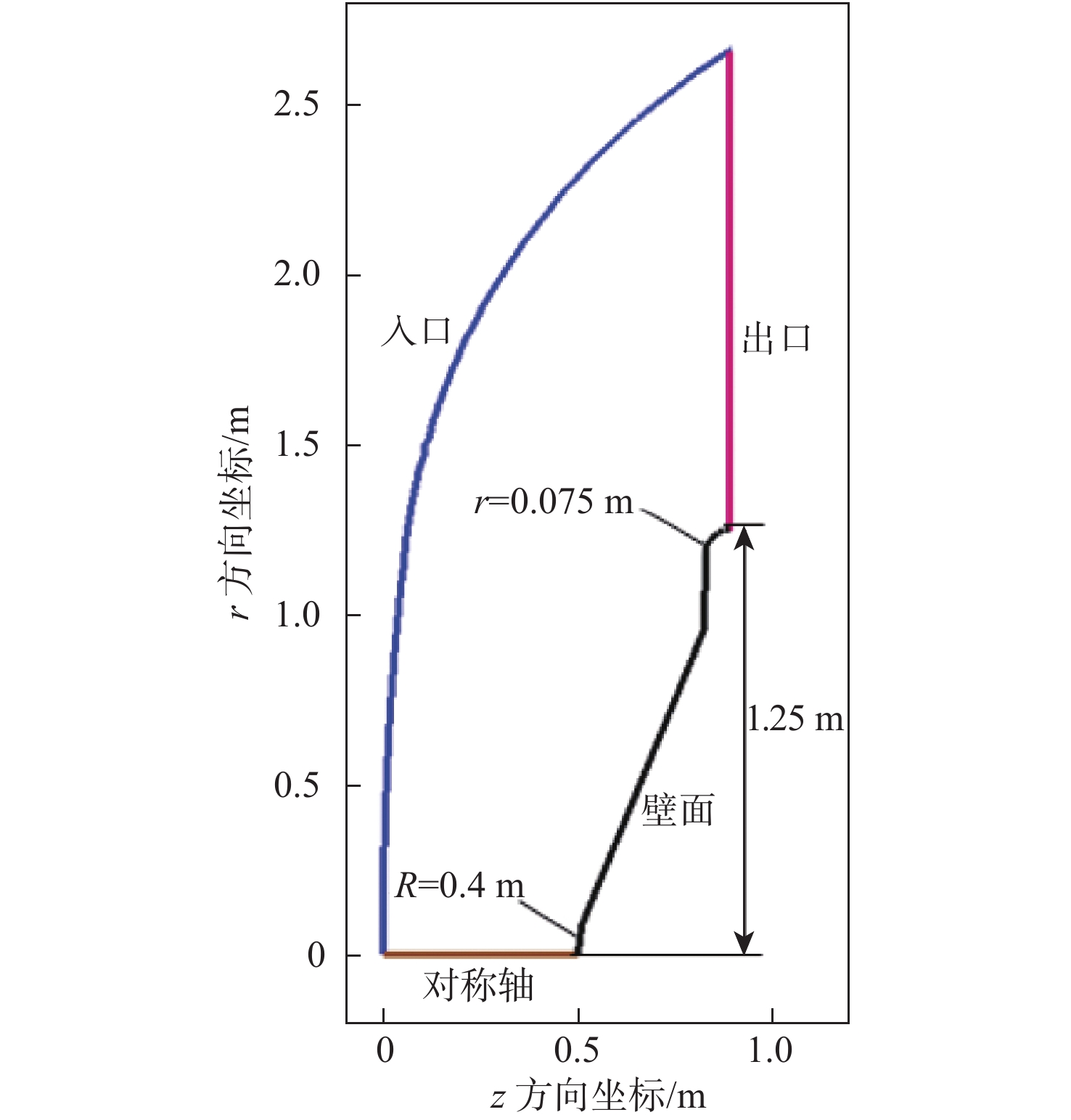
 下载:
下载:
